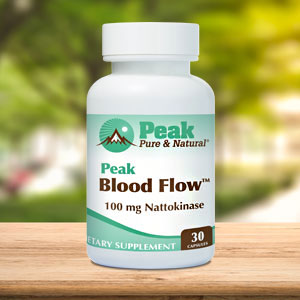Get Easy Health Digest™ in your inbox and don’t miss a thing when you subscribe today. Plus, get the free bonus report, Mother Nature’s Tips, Tricks and Remedies for Cholesterol, Blood Pressure & Blood Sugar as my way of saying welcome to the community!
How to improve your odds of recovery following a stroke

About 15 years ago, I got a phone call that every child dreads…
My dad was on the line and I could hear the worry in his voice. He and my mom had just made it to the emergency room via ambulance and the doctors said that there was every reason to believe she had suffered a stroke.
The next days were marked by long hours in the hospital and high levels of stress, as my mom couldn’t move her right arm at all, read, see the numbers on a clock, walk to the bathroom, or even brush her teeth.
No one had any idea what was next.
Yet, a decade and a half later, we can all look back on that time and see how blessed we are.
My mom recovered, almost fully with only slight memory problems that are easily death with to show for her ordeal.
Unfortunately, not everyone who suffers a stroke is so lucky…
In fact, stroke is the leading cause of long-term disability in the United States, predominately striking older adults and reducing mobility in half of the survivors over the age of 65.
However, in all of the bleak statistics, there is also good news.
Research has proven that regular physical activity can improve recovery and reduce problems with function after the fact.
Yet, no one has actually looked at what level of activity works so doctors’ recommendations have been a crapshoot – until now.
Light, moderate, or vigorous?
In a brand new study, researchers at the University of Illinois at Urbana-Champaign used accelerometers to measure daily physical activity in 30 stroke survivors for a week to see how much the participants moved and how well they performed routine physical tasks.
The team used two measures of physical ability and function:
- One that was objective where they looked at the stroke survivor’s balance, walking speed and more
- And, one where the person themselves rated how well they felt they could handle daily tasks like getting in and out of the car or pouring water from a heavy pitcher.
They then compared the survivors’ abilities to their level of either light or moderate-vigorous physical activity.
And, here’s what they found…
While most stroke survivors only logged about seven minutes of moderate-to-vigorous activity per day, this level was the best predictor of their performance on objective measures of physical function.
In other words, getting even a low amount of this level of physical activity is what most helps balance, walking speed, and endurance.
Related: These 6 kinds of exercise can propel you to incredible health
However, according to the team, light physical activity was just as important.
In fact, the study revealed that stroke survivors who engaged in a lot of light physical activity — like taking leisurely walks or doing household chores or light gardening — reported fewer physical limitations and felt they had an easier time performing their tasks of daily living than those who were more sedentary.
And, this is good news since on average the stroke survivors were able to log more than three hours a day of this light level of activity!
Mix it up
This means that if you or someone you love is recovering from a stroke, get ready to mix it up for best results when it comes to warding off disability and maintaining optimal function.
You can shoot for moderate-vigorous physical activity when you’re able, such as brisk walking or bicycling, and otherwise focus on light activities that while they won’t make you break a sweat, will keep you on your feet and physically engaged.
Editor’s note: Have you heard of EDTA chelation therapy? It was developed originally to remove lead and other contaminants, including heavy metals, from the body. Its uses now run the gamut from varicose veins to circulation. Click here to discover Chelation: Natural Miracle for Protecting Your Heart and Enhancing Your Health!
Sources:
- Stroke Statistics — The Internet Stroke Center
- Stroke Facts — U.S. Centers for Disease Control & Prevention
- Examples of Moderate and Vigorous Physical Activity — Harvard T.H. Chan School of Public Health
- For stroke survivors, light physical activity linked to better daily function — EurekAlert













